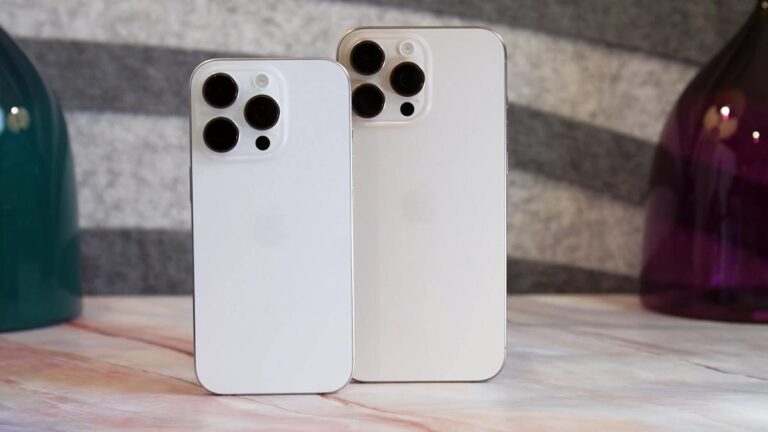Knowing the big internal changes coming to our phones with iOS 26, we’re getting excited to see how Apple has revamped its newest smartphones: the iPhone 17 lineup. We still have to wait over a month to find out — assuming Apple sticks to its usual release schedule — but for now, we can speculate what the new phones will look like. As with most unreleased iPhone models, rumors and leaks have trickled in about the hardware side ahead of the official introduction. Here’s what we’re expecting and what we can reasonably assume we’ll get from Cupertino in September.
What are the latest iPhone 17 rumors and reports?
Surprisingly, the latest rumor isn’t about the actual iPhone 17 details themselves, but rather when they’ll finally be showcased. MacRumors highlighted a story originally reported by iphone-ticker.de that the Apple iPhone 17 event could be Tuesday, September 9, according to information gleaned from German mobile phone providers.
While the iPhone events typically take place around the second week of September, we won’t know the actual date until Apple makes the official announcement.
How much will the iPhone 17 cost?
Apple’s announced plan to expand US-based manufacturing partners seems to give it at least some shielding from the steepest Trump administration tariffs that have already triggered price increases on everything from Switch consoles to high-end cameras to Sonos speakers. But given that President Trump’s trade policies can change from week to week, and Apple’s continuing reliance on Asia-based supply chains, price shocks remain an ongoing possibility. The bigger question is: Will Apple absorb any higher costs, or pass them on to consumers?
If prices do creep up, Apple may choose to pair it it with an “upgrade.” Consider this recent rumor posted by MacRumors from a leaker known as “Instant Digital,” suggesting that the default storage of the iPhone 17 line may start at 256GB, doubling the current 128GB baseline. While that could be accompanied by a price increase of $50, Apple could at least pitch it as a “better value.” That said, the company doubled the default RAM of its Mac computers from 8GB to 16GB at no extra cost in 2024 — but that was before the current Trump tariff cycle started.
When will the iPhone 17 series be announced?
Most years, the flagship smartphones are introduced in September. It’s a little early to have the specific dates; some years, Apple only gives a week or two of lead time between sending invites and hosting the event. But years of past precedent show that sometime in September should be when the 17 models make their debut. This family of smartphones may be the last to follow that trend, however. There have been hints that the introduction of the iPhone 18 collection in 2026 will be split into a pro-tier announcement in the fall and a standard model announcement the following spring.
What will the new iPhone 17 lineup include?
Design leaks suggest that Apple is building an ultra-thin smartphone, likely to be named the iPhone 17 Air to match Apple’s ultralight laptop designation. Bloomberg‘s Mark Gurman, often a solid source of advanced intel about Apple, reported in January that the iPhone 17 Air will be equipped with a basic A19 chip and will only have a single camera lens. It may also use Apple’s new in-house modem, which was introduced in February on the iPhone 16e. More details about this development may leak ahead of September, but that’s what we know for now.
An investor note from Apple analyst Jeff Pu indicated that the Air will have a titanium frame. If his reports are accurate, the lightweight smartphone will be the only entry in the iPhone 17 lineup to use that metal; the iPhone 17, iPhone 17 Pro, and iPhone 17 Pro Max are expected to be made of aluminum, which is oddly a lighter material than titanium. Other speculation had suggested that the Air would use a blend of aluminum and titanium, so the exact materials may not be known until the official announcement.
Additionally, an August 4 MacRumors report says the internal battery pack of the iPhone Air is just 2.49mm thick — half the thickness of the iPhone 17 Pro battery. The leak was posted on the Korean-langauge Naver blog, where they show the alleged batteries of the iPhone 17 Air and 17 Pro side by side. The same account claimed the 17 Air’s battery capacity was a mere 2,800 mAh, MacRumors notes. (That’s below the battery capacity of current iPhone 16 models.)
Each new roster includes a base model, but over the years, Apple has shaken up the variety of phones it offers. Most likely there will be an iPhone 17 and an iPhone 17 Pro. Apple has also committed to the size matters philosophy, and has been building an iPhone Pro Max option with an even bigger screen and better battery life; the 17 roster will almost certainly have one as well.
The new Pro iPhones are said to have a full-width “camera island” on the rear, which would mark the first time an Apple model opted for that design. This feature can be seen in the purported iPhone 17 “spotted in the wild.” The pics, highlighted on MacRumors, show a black cased iPhone (17 Pro?) with the distinct back panel. Is it the real deal? The dual angles lend a degree of credibility in a social media landscape increasingly polluted with AI-enhanced fakes, but your guess is as good as ours.
The iPhone 17 Air seems primed to take the place of a potential iPhone 17 Plus. Since the iPhone 16e was only just introduced in February at a surprisingly high price point, it seems unlikely that there will be a new addition to that lower end of the spectrum, the models that were previously called SE.
At the very least, it sounds like the iPhone 17 Air won’t take away the charging port and rely only on wireless connectivity. Bloomberg said that while Apple had investigated making the iPhone 17 Air without a single port, the company (fortunately) changed plans. He also says that the rumored phone will have a 6.6-inch screen and include the Dynamic Island and Camera Control button. Finally, the price is rumored at $900 — likely more than the standard iPhone 17 but less than the Pro.
We’ve also gotten what seems to be a reliable look at what the color lineup will be for the new smartphones. Macworld reported that the iPhone 17 will be available in black, white, steel gray, green, purple and light blue. The iPhone 17 Air will reportedly have four color options: black, white, light blue and light gold. While the Air colors will be less saturated, the visuals for the iPhone 17 Pro and iPhone 17 Pro Max will go bold. The options for the Pro models are expected to be black, white, gray, dark blue and orange.
On July 30, Tom’s Guide highlighted an X post from Sonny Dickson — a longtime and generally reliable leaker of unreleased iPhone information — showing “dummy” iPhone 17 models in the new colors that were the source of the aforementioned Macworld story. While these are literally just mock-ups — not real, leaked iPhones — it’s interesting to see how the design and color rumors translate into a real-world look and feel.
What will iOS 26 be like?
Apple upended its numbering conventions with WWDC 2025, and will match the name of each new operating system to the year it’s released. So when the next wave of iPhones hits, they’ll be running on iOS 26.
On the design side, the smartphone OS introduced during the big developer showcase took a contentious approach dubbed Liquid Glass. Apple has been scaling down the amount of transparency effects in the subsequent beta tests of iOS 26, but it will still have a glass-like visual.
The feature list includes big and small updates. On the more impactful side, the Phone and Photos apps have been redesigned. There will be several features leveraging artificial intelligence, such as live translation capabilities coming to Phone, FaceTime and Messages. Apple is also currently testing a sensitive content warning for child accounts that will freeze FaceTime video if nudity is detected by on-device machine learning tools. And the company is also launching Visual Intelligence, which will use AI to search for elements in an image.
iOS 26 also has a litany of minor, quality of life improvements. Group texts are getting support for polls. And for the slow risers out there, iOS 26 will finally let you escape the tyranny of the nine minute snooze alarm.
The next iOS is now available as a public beta. Here are our initial impressions of the Liquid Glass design and other new features. iOS 26 is compatible with all models back through iPhone 11.
Update, August 8, 2025, 4:43PM ET: Added new speculations and reports about iPhone 17 pricing.
Update, August 6, 2025, 4:05PM ET: Added latest details about the potential iPhone 17 event date.
Update, August 4, 2025, 5:23PM ET: Added latest battery leaks about the iPhone 17 models.
Update, August 1, 2025, 8:15AM ET: Added new photos showing potential iPhone 17 colors.
Update, July 30, 2025, 11:08AM ET: Added latest leaks and rumors about the iPhone 17, and updated information on the iOS 26 public beta.
Update, July 17, 2025, 4:40PM ET: Added latest information about iOS 26, possible materials for the Air, and the color options for the different models.
Update, March 17, 2025, 2PM ET: Added details about the rumored price and features of the iPhone 17 Air.
Update, April 11, 2025, 3:45PM ET: Added details from Front Page Tech’s new video that claims to reveal details from a leaked iOS 19 build.
Katie Teague contributed to this story.


























